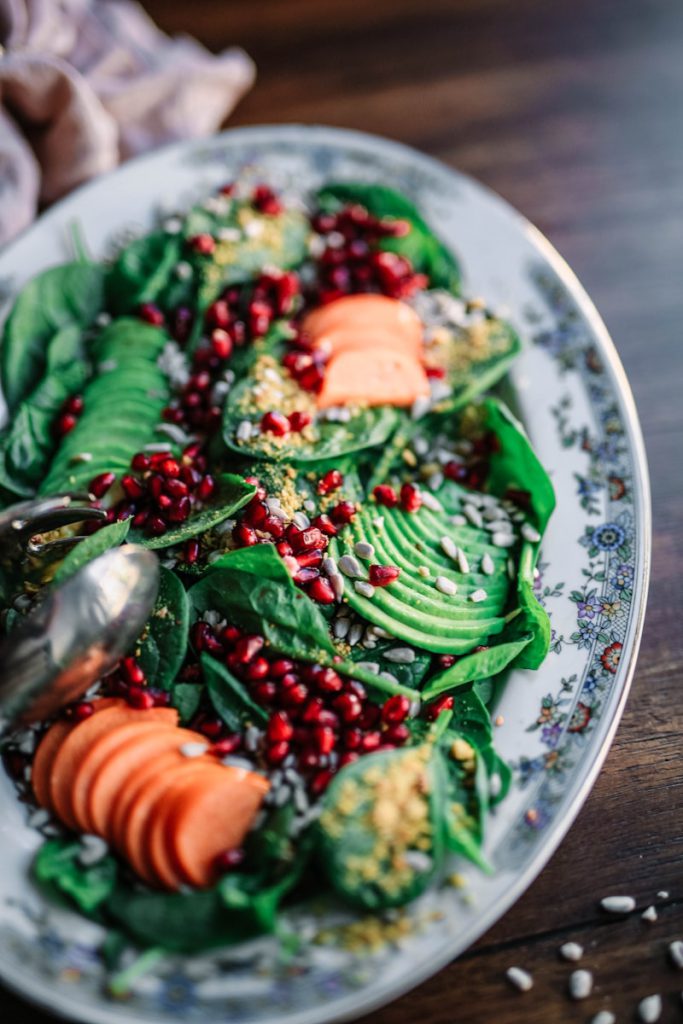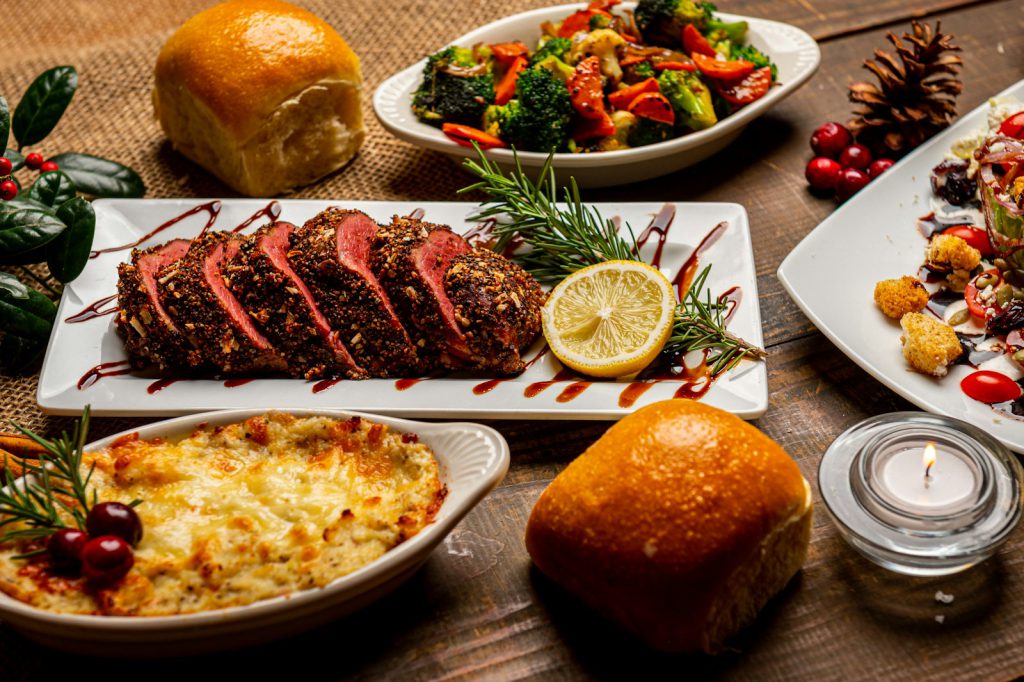The trend of health-conscious eating and healthy party catering has become increasingly popular in recent years. As people become more aware of the benefits of a healthy diet, there is a growing demand for nutritious and delicious food options, even at social gatherings. Healthy bbq catering for parties not only satisfies guests’ appetites but also promotes well-being and leaves a lasting impression. This guide will explore the principles of healthy catering, provide detailed menu ideas, discuss customization options, and offer tips for organizing a successful event.
Understanding Healthy Catering
Social events often revolve around food, making it a crucial element in creating a memorable experience. Traditional catering often includes calorie-laden, processed foods that can leave guests feeling sluggish. In contrast, healthy catering emphasizes fresh, vibrant, and wholesome ingredients that enhance energy and enjoyment. Whether you’re hosting a birthday party, corporate event, or wedding, incorporating healthy catering can elevate the occasion.
Catering to the diverse dietary preferences and needs of guests is another advantage of healthy catering. With a growing number of people adopting diets such as vegan, gluten-free, and low-carb, offering a variety of healthy options ensures that all guests feel included and satisfied. This comprehensive guide will help you navigate the world of healthy catering, providing practical tips and delicious ideas to impress your guests.
Table: Comparison of Popular Healthy Catering Services
| Example Service | Specialties | Popular Dishes | Customization Options |
|---|---|---|---|
| Mediterranean | Mediterranean-inspired healthy meals | Chicken Tikka Masala, Mediterranean Chicken Salad, Wood-Fired Vegetable Salad | Individual catering boxes, build-your-own options |
| Blod | Bold, flavorful, customizable meals | Asian Sweet Potato Noodles, Lemon Chicken Breast, Roasted Salmon | Build-your-own spreads, chef-curated party packs |
| Wraps | Fresh, healthy wraps, salads, and bowls | Buffalo Chicken Salad, Veg Head Wrap, Acai Bowls | Customizable wraps and bowls |
| Chicken | Southern-style healthy catering | Pimento Cheese Balls, Fruit Trays, Signature Sandwiches | Customized menus, various platter options |
Comparison List: Key Features of Healthy Catering
- Freshness: Use of fresh, organic, and locally sourced ingredients.
- Variety: A diverse menu with options for different dietary needs.
- Customization: Build-your-own options and customizable menus.
- Presentation: Attractive and eco-friendly serving methods.
- Health Benefits: Nutritious, balanced meals that promote well-being.
Healthy catering is an excellent way to promote well-being and leave a lasting impression on your guests. By using fresh, organic, and locally sourced ingredients, offering customizable options, and ensuring a variety of dishes, you can create a memorable and health-conscious event. Embrace the benefits of healthy catering for your next gathering and enjoy the positive impact it has on your guests.
Why Choose Healthy Catering?
Choosing healthy catering for your event brings numerous benefits, including promoting wellness, accommodating dietary restrictions, and providing delicious, nutrient-rich meals. Healthy catering ensures that all guests, regardless of their dietary needs, can enjoy the food without compromising on taste or nutrition. With the increasing awareness of health and wellness, opting for healthier menu options can also enhance the overall appeal of your event.

Benefits of Healthy Catering
| Benefit | Description |
|---|---|
| Promotes Wellness | Nutritious options that support health and well-being. |
| Accommodates Dietary Needs | Suitable for vegan, vegetarian, gluten-free, and other diets. |
| Enhances Event Appeal | Healthy food options can attract health-conscious guests. |
Customisable Catering Menus
Customizable catering menus are key to meeting the varied preferences and dietary needs of your guests. Offering a range of vegan, vegetarian, and gluten-free options ensures that everyone can enjoy a delicious meal tailored to their specific dietary requirements.
Vegan and Vegetarian Options
- Salads: A variety of salads featuring fresh greens, vegetables, and plant-based proteins.
- Wraps: Wholegrain wraps filled with a mix of vegetables, hummus, and tofu.
- Bowls: Grain bowls with quinoa, chickpeas, roasted vegetables, and tahini dressing.
Gluten-Free Options
- Gluten-Free Wraps: Wraps made with gluten-free tortillas, filled with lean meats and fresh veggies.
- Salads: Gluten-free salads with a variety of greens, nuts, seeds, and gluten-free dressings.
- Main Courses: Gluten-free pasta dishes and grilled meat options.
Fresh and Seasonal Ingredients
Using fresh, seasonal ingredients not only enhances the flavor of your dishes but also ensures that your meals are packed with nutrients. Seasonal produce is often more affordable and environmentally friendly, making it a great choice for catering.
Seasonal Menu Items
| Season | Ingredients | Menu Ideas |
|---|---|---|
| Spring | Asparagus, peas, radishes | Spring vegetable salad, asparagus risotto |
| Summer | Tomatoes, zucchini, berries | Caprese salad, berry fruit platter |
| Autumn | Squash, apples, kale | Butternut squash soup, apple crisp |
| Winter | Root vegetables, citrus fruits | Roasted root vegetables, citrus salad |

Popular Healthy Catering Options
Offering a variety of healthy catering options can make your event both enjoyable and memorable. Here are some popular choices:
Salads
- Greek Salad: Fresh tomatoes, cucumbers, olives, feta cheese, and a light vinaigrette.
- Quinoa Salad: Quinoa, black beans, corn, avocado, and a cilantro-lime dressing.
- Spinach Salad: Baby spinach, strawberries, almonds, and goat cheese with balsamic vinaigrette.
Wraps and Sandwiches
- Veggie Wraps: Wholegrain wraps with hummus, roasted vegetables, and spinach.
- Chicken Caesar Wraps: Grilled chicken, romaine lettuce, parmesan cheese, and Caesar dressing in a wholegrain wrap.
- Turkey and Avocado Sandwiches: Sliced turkey, avocado, lettuce, and tomato on wholegrain bread.
Bowls
- Buddha Bowls: Brown rice, steamed vegetables, tofu, and a tahini dressing.
- Mediterranean Bowls: Quinoa, chickpeas, cucumbers, tomatoes, olives, and tzatziki sauce.
- Protein Bowls: Grilled chicken or salmon, mixed greens, sweet potatoes, and a light vinaigrette.
Healthy catering involves providing nutritious, balanced meals that are both appealing and satisfying. The key principles include using fresh, organic, and locally sourced ingredients, minimizing processed foods, and offering a variety of options to cater to different dietary needs. Healthy catering focuses on providing wholesome foods that are rich in nutrients, low in unhealthy fats and sugars, and free from artificial additives.
The core of healthy catering lies in its commitment to quality and health. This means prioritizing ingredients that are nutrient-dense and minimally processed. For example, whole grains, lean proteins, healthy fats, and a variety of fruits and vegetables form the foundation of a healthy catering menu. Additionally, healthy catering emphasizes portion control and balanced meal composition, ensuring that guests receive the right mix of nutrients without overeating.
Importance of Fresh, Organic, and Locally Sourced Ingredients
Fresh ingredients retain more nutrients and flavor compared to processed or preserved foods. Organic produce is grown without the use of synthetic pesticides and fertilizers, reducing the risk of harmful chemicals. Locally sourced ingredients support local farmers and reduce the environmental impact associated with transportation. Using these ingredients ensures that the food is not only healthy but also flavorful and sustainable.
Incorporating fresh, organic, and locally sourced ingredients not only benefits health but also enhances the taste and appeal of the dishes. Fresh produce is often more vibrant in color and richer in flavor, making meals more enjoyable. Organic ingredients, free from synthetic chemicals, provide a cleaner and more natural taste. Local sourcing supports community farmers and ensures that ingredients are at their peak freshness, having traveled shorter distances from farm to table.
Benefits of Healthy Catering
Healthy catering offers numerous benefits, including improved guest satisfaction, better overall health, and a positive environmental impact. Guests appreciate the effort to provide nutritious and tasty options, which can enhance their overall experience at the event. Moreover, healthy eating promotes better digestion, energy levels, and mood, contributing to a more enjoyable and lively atmosphere. Environmentally, supporting local and organic farming practices reduces carbon footprints and encourages sustainable agriculture.
Menu Ideas and Options
Appetizers
Appetizers set the tone for the meal and are a great way to introduce guests to healthy eating. Offering a variety of light, nutritious starters can whet appetites and showcase the benefits of healthy catering.
Hummus Platters: Offer a variety of hummus flavors, such as classic, roasted red pepper, and avocado, paired with whole grain pita chips and fresh veggie sticks. Hummus is rich in protein and healthy fats, making it a satisfying and nutritious option.
Veggie Sticks with Dips: Arrange colorful veggie sticks (carrots, celery, bell peppers, cucumber) with healthy dips like Greek yogurt ranch, tzatziki, and guacamole. These dips are lower in calories compared to traditional dips and offer additional nutrients.
Fruit Skewers: Create vibrant fruit skewers using seasonal fruits like berries, melons, and grapes, served with a honey-yogurt dip. Fresh fruit is naturally sweet and packed with vitamins and antioxidants, making it a refreshing and healthy appetizer.

Main Courses
Main courses are the centerpiece of the meal and should be hearty, nutritious, and flavorful. Offering a variety of main dishes ensures that all guests find something they enjoy.
Grilled Chicken Salads: Offer a selection of salads featuring grilled chicken, mixed greens, and a variety of toppings (avocado, nuts, seeds) with dressings on the side. Grilled chicken is a lean protein source, and the variety of toppings adds texture and flavor.
Quinoa Bowls: Provide customizable quinoa bowls with a base of quinoa and a variety of toppings, including roasted vegetables, chickpeas, feta cheese, and a choice of dressings. Quinoa is a complete protein and rich in fiber, making it a nutritious base for a meal.
Vegan Wraps: Prepare wraps filled with ingredients like hummus, roasted vegetables, spinach, and avocado, wrapped in whole grain tortillas. These wraps are not only nutritious but also cater to vegan and vegetarian guests.
Side Dishes
Side dishes complement the main courses and add variety to the meal. Offering a range of healthy sides ensures that guests can enjoy a balanced and satisfying dining experience.
Roasted Vegetables: Serve a medley of roasted vegetables, such as carrots, sweet potatoes, and Brussels sprouts, seasoned with herbs and olive oil. Roasting enhances the natural sweetness of vegetables and retains their nutrients, making them a delicious and healthy addition to any meal.
Lentil Salads: Offer a variety of lentil salads, like Mediterranean lentil salad with tomatoes, cucumbers, olives, and feta, dressed with a lemon vinaigrette. Lentils are high in protein and fiber, making them a filling and nutritious option.
Chickpea Dishes: Provide chickpea-based dishes, such as chickpea and spinach curry or roasted chickpeas with spices. Chickpeas are a great source of protein and fiber, and their versatility allows them to be used in a variety of flavorful dishes.
Desserts
Healthy desserts can be just as delicious and satisfying as traditional options. By using natural sweeteners and nutrient-dense ingredients, you can create desserts that are both tasty and nutritious.
Fruit Salads: Create refreshing fruit salads with a mix of seasonal fruits, mint leaves, and a light drizzle of honey. Fruit salads are naturally sweet and packed with vitamins and antioxidants, making them a healthy and delicious dessert option.
Chia Pudding: Offer chia pudding made with coconut milk and topped with fresh berries and nuts. Chia seeds are rich in omega-3 fatty acids, fiber, and protein, making this dessert both nutritious and filling.
Yogurt Parfaits: Serve Greek yogurt parfaits layered with granola, honey, and fresh fruit. Greek yogurt is high in protein, and the addition of granola and fruit adds texture and natural sweetness.
Beverages
Providing a selection of healthy beverages is essential for a well-rounded catering menu. Fresh juices & herbal teas, and infused water are great alternatives to sugary sodas and alcoholic drinks.
Fresh Juices: Provide a selection of fresh juices, such as orange, apple, and carrot, made on-site or sourced from a local juicer. Fresh juices are rich in vitamins and minerals, making them a nutritious and refreshing beverage option.
Herbal Teas: Offer a variety of herbal teas, including mint, chamomile, and hibiscus, served hot or iced. Herbal teas are naturally caffeine-free and can be enjoyed at any time of day.
Infused Water: Serve water infused with fruits, herbs, and vegetables, such as lemon and mint, cucumber and lime, or strawberry and basil. Infused water is a refreshing and hydrating option that adds a subtle flavor without added sugars or calories.
Customization and Dietary Preferences
Catering to Different Dietary Needs
Healthy catering should accommodate various dietary preferences, including gluten-free, vegan, vegetarian, and low-carb options. This ensures that all guests can enjoy the food without compromising their dietary requirements. Providing clear labels and information about each dish’s ingredients can help guests make informed choices.
- Gluten-Free: Offer gluten-free options by using gluten-free grains like quinoa and rice, and ensuring that sauces and dressings are gluten-free.
- Vegan and Vegetarian: Include a variety of plant-based dishes, such as salads, wraps, and grain bowls, to cater to vegan and vegetarian guests.
- Low-Carb: Provide low-carb options by including dishes with lean proteins and non-starchy vegetables, and offering healthy fats like avocado and nuts.
Importance of Customization in Healthy Catering
Customization allows guests to personalize their meals according to their tastes and dietary needs. Offering build-your-own options, such as salad bars or quinoa bowls, ensures that everyone can find something they enjoy. Customization also enhances the dining experience, making guests feel valued and included.
Build-Your-Own Stations: Set up stations where guests can customize their meals, such as salad bars with a variety of toppings and dressings, or quinoa bowls with different proteins and vegetables.
Personalized Menu Options: Work with the catering service to create a menu that includes options for different dietary preferences, ensuring that all guests have something to enjoy.
Tips for a Successful Healthy Catering Event
Start by assessing your guests’ dietary or religious preferences and requirements. Plan a balanced menu that includes a variety of appetizers, main courses, side dishes, desserts, and beverages. Ensure that the menu offers something for everyone, with options for different dietary needs.
Menu Balance: Include a mix of proteins, whole grains, vegetables, and fruits to create a well-rounded menu. Balance rich and light dishes to ensure that guests feel satisfied without being overwhelmed.
Ingredient Quality: Prioritize fresh, organic, and locally sourced ingredients to enhance the flavor and nutritional value of the dishes.
Presentation and Serving Tips
Presentation is key to making healthy food appealing. Use colorful ingredients and arrange them attractively on platters. Consider using eco-friendly serving ware and utensils. Provide clear labels for each dish, highlighting key ingredients and dietary information.
Visual Appeal: Use a variety of colors and textures to make the food visually appealing. Arrange dishes on attractive platters and use garnishes like fresh herbs and edible flowers.
Eco-Friendly Options: Choose sustainable serving ware and utensils, such as bamboo plates and compostable cutlery, to reduce the environmental impact of your event.
Ensuring Variety and Balance
A successful healthy catering event should offer a variety of flavors, textures, and nutrients. Include a mix of protein sources, whole grains, vegetables, and fruits. Balance rich and light dishes to ensure that guests feel satisfied without being overwhelmed.
Flavor Variety: Include a range of flavors, from savory and spicy to sweet and tangy, to cater to different taste preferences.
Nutrient Balance: Ensure that the menu provides a good balance of macronutrients (proteins, fats, and carbohydrates) and micronutrients (vitamins and minerals).
Creative and Visual Presentation of health conscious items
The presentation of your catering can make a significant impact on the overall experience of your guests. Creative and visually appealing setups not only attract attention but also enhance the dining experience.
Artistic Fruit Arrangements
- Fruit Platters: Arranged in colorful, artistic patterns.
- Fruit Skewers: Easy-to-eat, individual servings.
- Carved Fruits: Creative carvings for a stunning display.
DIY Food Stations
- Salad Bar: A variety of greens, toppings, and dressings for guests to create their own salads.
- Wrap Station: Ingredients for guests to build their own wraps.
- Smoothie Bar: Fresh fruits, vegetables, and add-ins for custom smoothies.
Healthy Drinks and Desserts
Healthy drinks and desserts can complement your catering and provide a refreshing end to the meal.
Drinks
- Infused Water: Water infused with fruits, herbs, and vegetables.
- Low-Calorie Beverages: Options such as diet soda, light beer, and gluten-free wine.
- Smoothies: Fresh fruit and vegetable smoothies.
Desserts
- Fruit-Based Desserts: Fresh fruit platters, fruit salads, and baked fruit dishes.
- Healthy Sweet Treats: Options like chia seed pudding, yogurt parfaits, and dark chocolate.

Tips for Planning a Healthy Catering Menu
Planning a healthy catering menu involves careful consideration of dietary restrictions, balancing flavors, and providing a variety of options.
- Identify Dietary Needs: Know your guests’ dietary restrictions and preferences.
- Balance Flavors: Ensure a mix of sweet, savory, and umami flavors.
- Variety: Offer a range of dishes to cater to different tastes and preferences.
Healthy Catering for Special Diets
Healthy catering options must cater to various dietary needs, including vegan, gluten-free, and allergy-friendly diets. Offering specific menu items tailored to these requirements ensures inclusivity and satisfaction for all guests.
Vegan Catering Options
Vegan catering can be both delicious and nutritious. Here are some popular vegan options:
- Vegan Sushi Rolls: Made with vegetables, avocado, and seaweed.
- Stuffed Bell Peppers: Filled with quinoa, black beans, corn, and spices.
- Vegan Tacos: Soft corn tortillas with a variety of fillings like spiced tofu, grilled vegetables, and avocado.
Gluten-Free Catering Options
For guests with gluten intolerance, gluten-free options are essential:
- Gluten-Free Pasta: Made with chickpea or rice pasta, served with fresh vegetables and a light tomato sauce.
- Quinoa Bowls: Quinoa with roasted vegetables, grilled chicken, and a lemon-tahini dressing.
- Gluten-Free Desserts: Flourless chocolate cake, almond cookies, and fresh fruit parfaits.
Allergy-Friendly Catering
Ensure safety and enjoyment for guests with food allergies by offering allergy-friendly options:
- Nut-Free Salads: Fresh greens with a variety of vegetables and nut-free dressings.
- Dairy-Free Entrees: Grilled fish or chicken with a side of roasted vegetables.
- Egg-Free Desserts: Vegan cakes, cookies, and fruit-based desserts.
Healthy Theme Catering
Creating themed healthy catering can add a fun and memorable twist to your event. Themes can be based on cuisines, seasons, or even specific dietary trends.
Mediterranean Theme
A Mediterranean-themed menu can offer a variety of healthy and delicious options:
- Hummus and Pita: Homemade hummus served with whole wheat pita and fresh vegetables.
- Greek Salad: A mix of tomatoes, cucumbers, olives, feta cheese, and a light vinaigrette.
- Grilled Fish: Seasoned with herbs and served with a side of quinoa.
Seasonal Themes
Using seasonal ingredients not only enhances the flavor but also ensures freshness:
- Spring Menu: Asparagus soup, spring vegetable salad, and strawberry shortcake.
- Summer BBQ: Grilled vegetables, fresh fruit platters, and light pasta salads.
- Autumn Feast: Roasted root vegetables, pumpkin soup, and apple crisp.
- Winter Comfort: Hearty vegetable stews, warm grain salads, and citrus desserts.
Dietary Trend Themes
Stay current with dietary trends by offering trendy healthy options:
- Keto-Friendly: Low-carb options like zucchini noodles, cauliflower rice, and avocado-based dishes.
- Paleo Diet: Focus on lean meats, fresh vegetables, and fruit-based desserts.
- Plant-Based: Emphasize whole grains, legumes, and a variety of plant proteins.
Eco-Friendly Catering Practices
Incorporating eco-friendly practices in your catering can enhance your event’s appeal and contribute to sustainability.
Sustainable Sourcing
Use locally sourced, organic ingredients to reduce your carbon footprint and support local farmers:
- Farm-to-Table Menus: Create menus based on locally available produce.
- Organic Ingredients: Ensure that the ingredients are free from pesticides and chemicals.
Reducing Waste
Implement strategies to minimize food waste and environmental impact:
- Portion Control: Serve appropriate portion sizes to reduce leftovers.
- Compostable Packaging: Use eco-friendly, compostable plates, utensils, and packaging.
- Food Donation: Arrange to donate leftover food to local shelters or food banks.
Energy-Efficient Practices
Adopt energy-efficient methods in food preparation and service:
- Energy-Efficient Appliances: Use appliances that consume less energy.
- Minimal Cooking: Opt for dishes that require minimal cooking to save energy.
Healthy catering options can make any event a success by providing delicious, nutritious meals that accommodate various dietary needs. By choosing fresh, seasonal ingredients and offering customizable menus, you can create a memorable and health-conscious dining experience for your guests. Embrace the benefits of healthy catering and make your next event a hit with these diverse and delightful options.
Healthy catering options can transform any event into a successful and memorable occasion. By focusing on fresh, seasonal ingredients, customizable menus, and creative presentation, you can ensure that your guests enjoy a delicious and nutritious dining experience. Additionally, incorporating special diets, themed menus, and eco-friendly practices can further enhance the appeal and impact of your catering. Embrace these strategies to create a health-conscious and environmentally responsible event that leaves a lasting impression on your guests.
Here are some pf the refeernces used in the research:



